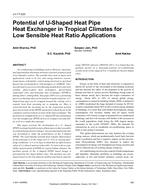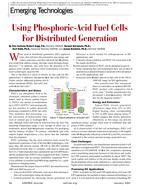Chilled water (CHW) systems are significant energy users in both industrial and commercial sectors. They are custom built for each site, often with rule of thumb design practices, leaving room for significant optimization. Although publications on techniques for CHW system optimization are widely available, these techniques require detailed engineering analysis to implement, due to complex interactions between system equipment. The sheer number of CHW systems in service, make it unrealistic to perform optimization analyses on every system. The result is good best practice control strategies are not utilized in most chilled water systems because the recommended “optimum” control parameters are unavailable. In other words, “Perfect is the enemy of the good”.
This paper focuses on large water-cooled CHW systems which include chiller(s), condenser pump(s) and cooling tower fan(s). Special focus is placed on improved condenser water set-point (CWstpt) controls, which can result in 5% to 10% annual system energy savings. This paper takes the first steps in generalizing key variables to obtain “best practice” condenser water control strategies given typical design practices, equipment, load profiles and climate zone. Based on experience, these best practices would apply to most typical chilled water systems. These best practices in most cases would not be as efficient as the optimum, but would be easier to implement. The goal of this paper is to empower CHW system operators to implement CWstpt best practices to achieve energy savings without detailed analysis. This could reduce industrial sector electrical energy use by 1 to 2%.
Citation: 2021 Virtual Conference Papers
Product Details
- Published:
- 2021
- Number of Pages:
- 8
- Units of Measure:
- Dual
- File Size:
- 1 file , 2.6 MB
- Product Code(s):
- D-VC-21-C061


